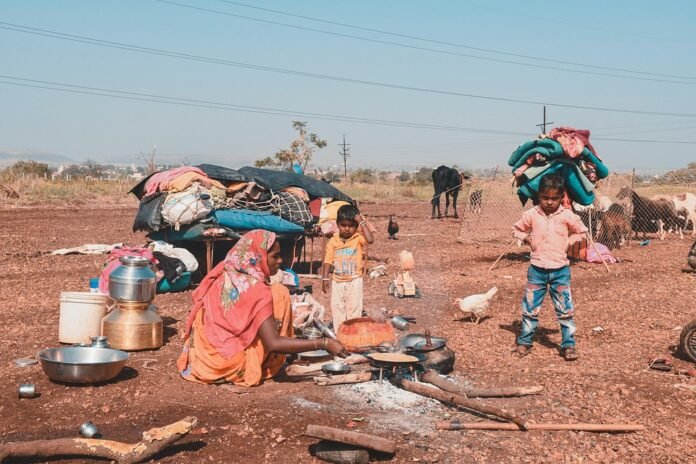Of course. Here is an article on the topic "Education in India: Investing in the Future, Overcoming Barriers."
Education in India: Investing in the Future, Overcoming Barriers
India stands at a pivotal moment in its history. Home to the world’s largest youth population, the nation possesses an unparalleled demographic dividend—a potential force for unprecedented economic growth and social transformation. However, this dividend is not a guarantee; it is a promise that can only be unlocked through one critical investment: education. The journey to educate over a billion people is monumental, fraught with challenges, but it is the single most important mission for securing India’s future as a global leader.
The Promise: Education as a National Investment
For India, education is not merely a social welfare program; it is the bedrock of its economic and developmental aspirations. A well-educated populace is the engine that drives a knowledge economy. It fuels innovation, nurtures a skilled workforce capable of competing on the global stage, and cultivates the critical thinking necessary to solve complex societal problems.
Investing in education yields multifaceted returns. It is the most effective tool for social mobility, empowering individuals to break free from cycles of poverty. It promotes gender equality, as an educated girl is more likely to be healthier, earn a higher income, and invest in her own children’s education. Furthermore, it strengthens the very fabric of democracy by creating informed, engaged, and responsible citizens. From the bustling tech hubs of Bengaluru to the burgeoning manufacturing corridors, the demand for skilled human capital is the common thread weaving India’s growth story together.
The Persistent Barriers: A Triad of Challenges
Despite significant progress since independence, India’s education system faces a triad of formidable barriers that hinder its potential.
1. The Access and Equity Divide:
While the Right to Education (RTE) Act of 2009 was a landmark step towards universal elementary education, access remains uneven. A stark rural-urban divide persists, with remote villages often lacking quality schools, proper infrastructure, and qualified teachers. Gender disparity, though narrowing, still prevents many girls from completing their education due to societal norms, safety concerns, and domestic responsibilities. The COVID-19 pandemic further exposed the deep-rooted digital divide, where students without access to devices or reliable internet were left behind.
2. The Quality Conundrum:
Simply getting children into schools is not enough. The next frontier is ensuring they are actually learning. For decades, the system has been criticized for promoting rote memorization over conceptual understanding and critical thinking. Overcrowded classrooms, high student-teacher ratios, and outdated curricula often fail to equip students with the practical skills needed for the 21st-century job market. Teacher training and continuous professional development remain critical areas that require urgent and sustained attention.
3. The Infrastructure and Resource Gap:
Many government schools, particularly in rural and low-income urban areas, operate with limited resources. Inadequate facilities, from a lack of clean toilets and drinking water to the absence of libraries and science labs, create an environment that is not conducive to learning. While government spending on education has increased, it still falls short of the recommended 6% of GDP, limiting the system’s capacity for transformative change.
The Path Forward: Policy, Technology, and People
Overcoming these barriers requires a multi-pronged approach, and India is already taking bold steps in the right direction.
The National Education Policy (NEP) 2020 represents a paradigm shift. This ambitious roadmap aims to overhaul the entire system, from preschool to higher education. Its key pillars—flexibility in subject choices, a focus on foundational literacy and numeracy, the integration of vocational training from the school level, and a move towards holistic, competency-based assessment—are designed to address the quality conundrum head-on. If implemented in letter and spirit, the NEP has the potential to make Indian education more relevant, equitable, and dynamic.
Technology is emerging as a powerful enabler. The EdTech boom, accelerated by the pandemic, has brought innovative learning solutions to millions. Government initiatives like the DIKSHA portal and SWAYAM online courses are democratizing access to high-quality educational content. While the digital divide must be addressed, technology holds immense promise for personalized learning, better teacher training, and bridging the rural-urban gap.
Finally, the solution lies with people. The role of motivated and well-trained teachers cannot be overstated. Investing in their development, empowering them with autonomy, and celebrating their contribution is crucial. Moreover, community participation and Public-Private Partnerships (PPPs) are essential for augmenting government efforts, building better infrastructure, and bringing real-world expertise into the classroom. Initiatives like the Mid-Day Meal Scheme have already proven that holistic, community-centric approaches can dramatically improve enrollment and retention.
Conclusion: A Collective Responsibility
The path to transforming India’s education landscape is long and challenging, but the destination is worth the journey. Educating India is not a task for the government alone; it is a collective responsibility for every citizen, corporation, and community. By viewing education as the nation’s most vital long-term investment, we can begin to systematically dismantle the barriers of access, quality, and equity.
By empowering its youth with the knowledge and skills to innovate, lead, and thrive, India will not just realize its demographic dividend—it will build a more prosperous, just, and enlightened future for generations to come. The classrooms of today are where the India of tomorrow is being forged. It is an investment we cannot afford to neglect.

